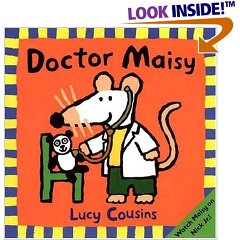WorryingÂ
Our concern for nature and, more generally, the state of the planet, has grown over the past couple of years, and I don’t foresee an end to our worry. Especially since having a child, we’ve been trying to make some changes. For instance, the day we realized we were pregnant, we switched over to organic, banning junk food, coke, and any kind of medication not absolutely necessary (i.e., painkillers for the head ache, cold medicines, etc.).
Reasoning in error
But unfortunately, for many of us, the recent and quite sudden explosion of realization that we are making the difference, for the worse, has not been coupled with a corresponding realization that we can make a difference, for the better.
A big part of the problem is an error in our reasoning, or fallacy, called the “Fallacy of the Heap” or “Sorites Fallacy”. It is also called the Bald Man Fallacy, because it follows the form of the following  (fallacious) agument: Al isn’t bald today. Surely, if he loses one hair today that won’t make him go from not bald to bald. And if he loses one after that, also that one won’t make him, suddenly, bald, nor the next one, nor the next… So, no matter how much hair he loses, Al will never go bald.
In the long run…
Similarly this one trip in the car/airplane; this one extra load of laundry/dishes; this one plastic bottle of water/toy; this one light bulb… won’t make that a difference. But of course, with regard to climate change and the natural predicament, one less hair on our heads does make us bald, in the long run.
{I am fascinated with that clause: “in the long run”, but that’s for another time, another entry, if not another blog. It’s what I am writing my doctoral dissertation on: what “the long run” means to us, in the scheme of things, and whether we can change that meaning.}
Making the difference here and now
In any case, we drafted a list of changes we can make, here and now, in our home, to stop from going bald. We call it the “Here and Now List”.
HERE AND NOW LIST
- use the car less: bike! walk!
- buy organic foods and as much locally grown (and processed, etc.) food as possible(read “The Tale of Two Tomatoes“).
- buy local books (no more Amazon purchases! pay the extra buck and support the independent bookstore). Yes, the UPS truck drives by anyway, but mine might be the package that puts an extra truck on the road.
- don’t preheat the oven, unless when cooking poultry, meat or fish (bacteria!).
- don’t preboil (e.g., when cooking pasta, potatoes, etc.).
- don’t let pots/pans boil away and fill only with however much water is needed (e.g., when making tea).
- when doing dishes and laundry, use lowest temperature possible.
- run dishwasher when it’s full.Â
- when doing dishes, fill sink; don’t run tap.
- one cup a day (as much tea/coffee as you want, but in only one cup).
- when brushing teeth, don’t run tap.
- recycle even the smallest piece of paper, the tiniest plastic cup.
- call up junkmail/catalogue companies and request being taken off their mailing lists
- even better: reuse. Even better: reduce.
- set up exchanges with friends, especially for those babyclothes and toys.
- use only the minimum of paper napkins/towels, at home and at restaurants (visit “These come from trees“).
- no to cardboard, styrofoam or plastic cups (bring own resusable cup).
- paper or plastic? Neither! (bring own canvas bag to shop, they’re stronger and much more stylish anyway – amusing/disconcerting article on the topic).
- don’t buy bottled water (according to the Whole Foods “The Whole Earth Weigh-In” pamphlet), “80% of the 25 billion single-serving plastic water bottles Americans use each year end up in landfills.”)
- when buying something, consider its packaging (lots of plastic? Nah, thanks!).
- use “green” cleaning products.
- replace all alight bulbs with compact fluorescent lamps (CFL), even the one in the fridge.
- flush toilet only after big job (just keep the lid closed) (if no guests are around).
- those diapers! >Â switch to g-diapers.
- those pads and tampons! > switch to DivaCup.
Get over the taboosÂ
Most items on the list are straightforward and easy, the last three might not be. I was as squamish about poop and blood as the next person… until I gave birth and started changing daipers. So I reconsidered the cultural taboos that made me recoil from excrement/menstrual blood and the honest consideration of their cost to the planet. Really, those 18-20 billion soiled, plastic and chlorine-bleached disposable diapers and those 7 billion bloody tampons and 13 billion bloody sanitary pads sitting in landfills in the US alone (and counting)… are they that much less disgusting?Â
An organic list
Our list needs to grow, item by item, as we tick it off as accomplished, and your comments and suggestions are very much appreciated.
I would love to add many more items, but they might not be feasible in our set-up. For instance, we would love to
- compost organic materials (all those veggie peels and egg-whites and chicken bones I’m throwing in with the plastics!).
- grow herbs and veggies, but we don’t have a garden and there is very little direct sunlight in our basement appartment: find a solution.
- not buy any more leather shoes, handbags. Bags is easy, shoes less. Find some alternatives, preferably that don’t involve more plastic.
If our circumstances can’t be changed, of course we adapt. I remember my mother-in-law’s protest to our organic-food-resolution: “what if it isn’t available? What then?” Well, then we’ll just have to starve.
You can have proof!
We believe that if we make these simple, feasible adustments, we do make a difference. Seems like we can even have some proof of that, with the Be-Green Carbon Calculator.
